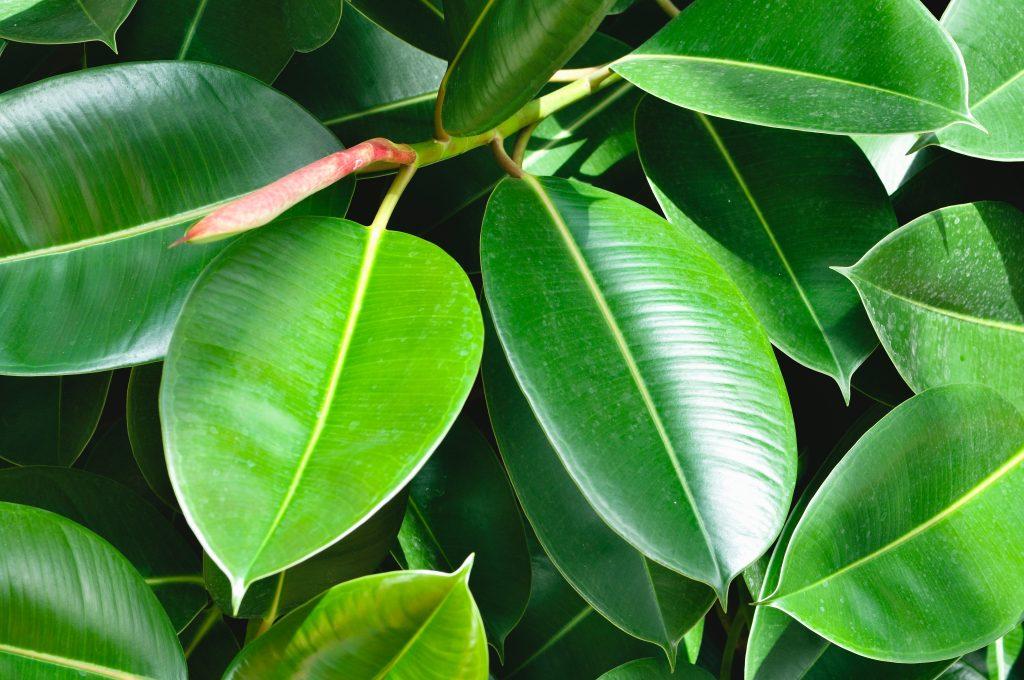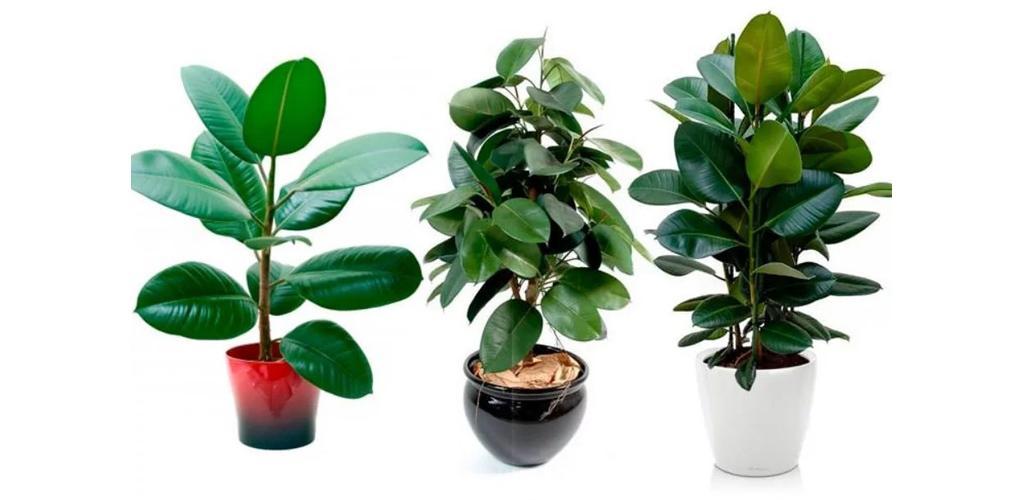Ficus is one of the most popular indoor plants, which belongs to the Mulberry family and is distinguished by a variety of species. Under natural conditions, it grows in the form of trees, vines, and shrubs. They are characterized by a high degree of endurance and feel good in different conditions. At the same time, many are interested in planting and caring for ficus at home, reproduction and problems during cultivation.
Description of the plant
Ficus is the name given to a whole group of crops from the Mulberry family.They can grow as vines, trees or shrubs. Many species have aerial roots, which are called epiphytes. The roots that descend to the ground form additional trunks. Representatives of this group of plants are called banyans. If aerial roots grow into the bark of another tree, the ficus is called a “strangler.” In nature, the crop grows up to 30 meters. At home, its height does not exceed 3-4 meters.
The leaves of the plant can be serrated or lobed. They are distinguished by their opposite or alternate arrangement. The flowers of the plant can have different shapes. The fruits are presented in the form of nuts. They are surrounded by juicy false fruit. When the root system is damaged, white milky sap is released. In many varieties it is quite poisonous.
Rules for keeping at home
The culture grows quickly and remains decorative if it is provided with suitable conditions. In this case, you should focus on the following parameters:
- Temperature – in summer it should be +25-30 degrees. In winter it is worth maintaining the parameters +16-20 degrees. The minimum values for ficuses with variegated foliage are +15 degrees. Most plants with monochromatic leaves can grow at temperatures of +10 degrees. The crop does not withstand soil hypothermia well. Therefore, the pot should not be left in a cool place - for example, on the floor or on a windowsill.
- Lighting should be quite bright, but at the same time diffused. The culture loves a lot of light, but does not withstand exposure to direct sunlight. Some species with monochromatic dark leaves develop normally in light partial shade. When there is a lack of lighting, the ficus loses color and sheds its leaves.
- Air humidity – the optimal parameter is considered to be 70%.However, it is acceptable to maintain the indicators at 50%. In summer, the crop prefers high humidity. If the room is warm and dry in winter, the flower should be regularly sprayed and bathed in the shower.
- Soil moisture – the plant needs abundant and systematic watering. At the same time, it can hardly withstand stagnant moisture. After each watering, the soil should dry out by 2-3 centimeters. For ficuses that reach the size of a tree, these parameters need to be increased to 6-7 centimeters. After each watering, the water must be drained. Otherwise, the soil will be waterlogged, which will lead to rotting of the roots.
It is important to consider that the higher the room temperature in winter, the more the ficus needs light and spraying, as its growth processes continue. To do this, it is worth providing additional lighting.
Care instructions
In order for the ficus to develop normally, it needs to be provided with complete and high-quality care.
Soil selection
Ficus needs light and loose soil that contains a lot of nitrogen. At the same time, the plant does not tolerate dense, oily and heavy soil. A suitable substrate contains leaf soil, peat and coarse river sand. You can make it yourself by mixing all the ingredients in equal parts. As a result, you will be able to obtain light and airy soil. As the ficus develops, you need to add 1 more piece of turf.
When pouring the substrate into a pot, it must be placed so that there is drainage at the bottom. In this case, the main part should include soil, and clean sand should be placed on top. This will provide additional permeability. If it is not possible to make the substrate yourself, you should buy a ready-made mixture called “Palm” or “Ficus”.
Some manufacturers offer a substrate that does not contain humus.He is also called landless. Plants can be transported in such soil. It is also suitable for cultivation. The only disadvantage of such a substrate is the minimum nutrient content. When using such soil, it must be fed with special preparations for ficuses.
Temperature and lighting
The plant lives in the tropics, so it needs warmth. In summer, the crop requires a temperature of +25-30 degrees, in winter – +16-20. At lower settings, the leaves fall off and the bush may die. In summer, it is not recommended to take the plant outside to prevent it from freezing. Varieties with green leaves can withstand cold better than variegated ones. Deciduous varieties of crops adapt well to the cold. At the same time, evergreen varieties are considered more heat-loving.
Since ficus is a tropical flower, it is considered to be quite light-loving. At the same time, variegated varieties can withstand even direct sunlight. The tree can be placed on a southeast or southwest windowsill that is well lit.
In winter, the ficus should be provided with additional lighting. However, its duration should be 12 hours. On the window, the bush should be rotated periodically so that it is equally lush on each side. When there is a lack of light, a houseplant may shed its leaves.
Humidity
Ficus trees are grown in conditions of high humidity. The same atmosphere should be maintained at home. The plant should be sprayed with water using a spray bottle. A growing flower should undergo 2-3 treatments per week. Ficus should have a shower once a month. It is not worth carrying out this procedure more often. It is recommended to wipe varieties with large foliage with a cloth.
How often to water
For irrigation, you should use settled water at room temperature. Ficus is able to withstand short drying of the soil. In the summer, watering needs to be increased, but it is important to remember a sense of proportion. When caring for indoor plants in cold weather, the conditions should be adjusted. In winter, ficus should be watered rarely. This is done once a week.
Ficus responds well to spraying. This is especially true for small-leaved varieties such as Kinki, Safari, Kerli. Large-leaved varieties are best wiped with a napkin. This applies to varieties such as Belize, Robusta, Melanie. All types of ficus need a warm shower. This procedure is carried out once a month. In this case, it is first necessary to cover the surface of the soil.
Fertilizer and feeding
It is impossible to grow decorative ficus without fertilizing. Fertilizer should be applied once every 2 weeks. In this case, the bush must first be watered. It is best to use preparations that contain a lot of nitrogen. It is recommended to feed the crop from March to October - during the active growing season.
If a tree is illuminated in winter, it also needs to be fed. However, this is done no more than once a month. To fertilize ficus, you can use products such as “Palma”, “Ideal”, “Agricola”. You should read the instructions for the dosage.
How to propagate a flower
The plant can be propagated in different ways. Most often this is done by cuttings or layering. The seed method is not recommended. Even if the home ficus bears fruit, the seeds will not ripen.
Most often, ficus is propagated by cuttings. This procedure can be carried out during pruning. It is also permissible to take a small branch measuring 4-5 centimeters with a leaf. The shoots need to be cut at an angle, retreating 1 centimeter. Leaf cuttings are often used to propagate ficus plants. In this case, you need to take a short shoot no larger than 1 centimeter.
To grow a ficus from a small cutting, it must be placed in a stimulator. For this purpose, it is permissible to use “Epin” or “Kornevin”. After this, the cutting must be placed in water or in a bowl with a substrate. The plant needs to be rooted in a warm place with good lighting. The culture takes root quickly. This process takes about 2 weeks. After the first roots appear, the branch can be kept in water for another week. After 7-10 days it can be planted in a pot.
It is best to propagate ampelous species. When breeding rubber-bearing ficus, cuttings must be taken from the middle or upper part of the crop. In this case, there must be at least one node on it. It is important to consider that direct sunlight has a negative effect on young and recently transplanted plants. Therefore, it definitely needs to be shaded.
To propagate ficus using layering, it is recommended to do the following:
- remove leaves from the strongest shoot;
- make a circular cut on the bark;
- put moss on the cut and tie it with cling film;
- after 2 weeks, wait for the roots to appear - at this stage the cuttings can be cut off and planted in the substrate.
It is also acceptable to use another method.To do this, you need to make an incision, fix the branch on the surface of the soil and sprinkle it with earth. When rooting the graft, it must be cut off and transplanted into a flower pot. Such a shoot will produce roots after 10-14 days. It can be shortened before planting. To do this, the top is cut in a straight line.
Ficus trees develop quickly, so they need to be replanted annually. It is best to do this in early spring. However, do not use a pot that is too large. This flower grows well in limited space. Large tree-like specimens should not be transplanted into a new container. It is enough for them to replace the top layer of the substrate.
Ficus is a fairly common indoor plant that can decorate any room. For flower growing to be successful, it needs to be provided with quality care.















